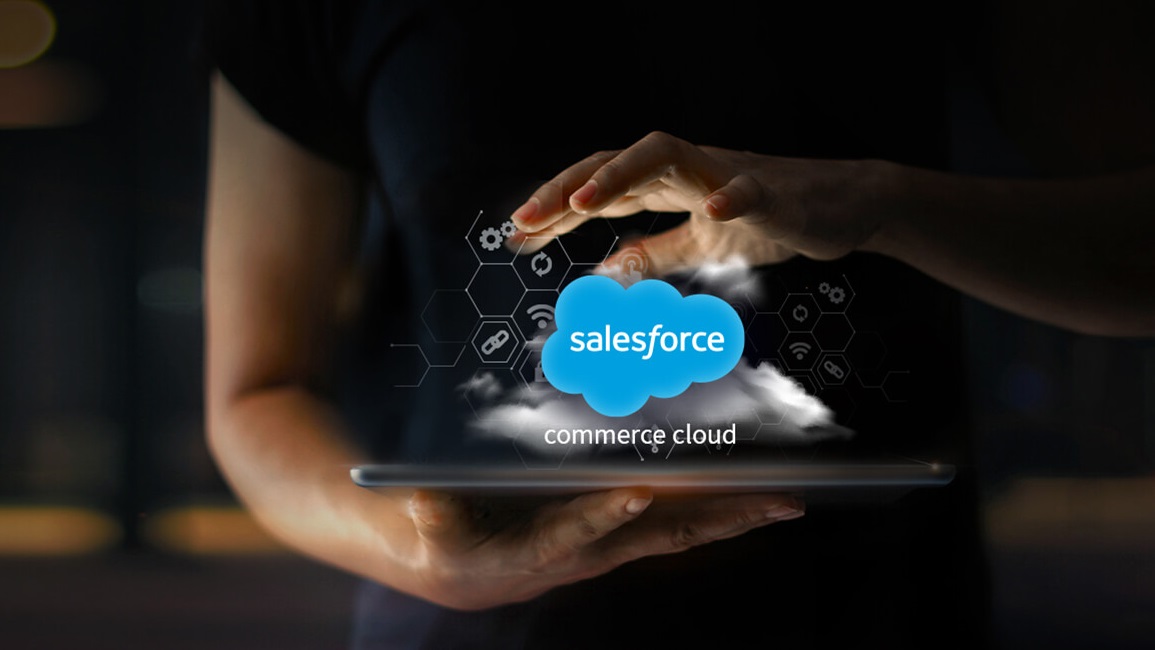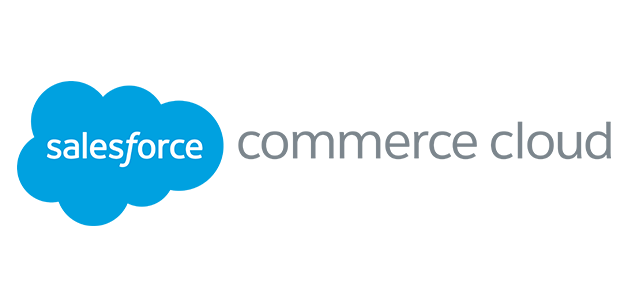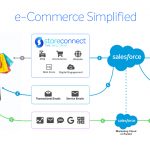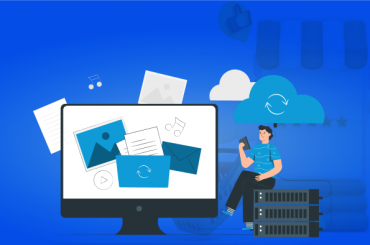Salesforce Merchandising Capabilities to Run Successful Ecommerce Store
Last Updated | November 21, 2022
Table of Contents
Merchants’ trading styles have developed as the technology and logistics industries have grown.
Every decade or so, a new trend in commerce emerges, and the present trend of digital commerce, pioneered by behemoths like Amazon, eBay, and Walmart, has cleared the way for smaller businesses to follow suit.
If you want to run a successful e-commerce site, you’ll need more salesforce merchandising skills.
Salesforce Commerce Cloud is a fantastic e-commerce platform that can accommodate this.
Using the Business Manager tool in Salesforce e-commerce, merchants may directly configure their online store without the intervention of the IT team in areas such as product updates, search optimization, marketing, promotions, and so on.
Questions about scaling commerce? Read this article Salesforce eCommerce integration to have a better understanding of the topic.
What Is Meant By Merchandising Your Site?
You may automate your business process and potentially increase sales by selling things online at any time of day. The process of marketing things for sale on your website is known as web merchandising. If you have a website, enhancing your Web merchandising can help you improve sales and profits.
In the retail industry, merchandising is critical to a company’s success. The way a product is presented and demonstrated to a customer has an impact on sales. The way things and goods are exhibited is just as significant in the internet world.
The way a product is displayed on your website is referred to as web merchandising. The layout of the website, for example, could fall under the category of merchandise.
Merchandising for Ecommerce
The activity of presenting and marketing products on your online business is known as eCommerce merchandising. The same principles that apply to in-store merchandising—layout, design, pricing, and displays—apply to your online store.
Your online presence, like your retail merchandising, should speak to your brand voice and align with your items and customer base.
Ecommerce Merchandising Elements
Different parts of retail merchandising are combined to produce a complete merchandising picture in your business. Here are some strategies for eCommerce merchandising that work.
- Clear layout: Your online presence should be streamlined with minimum sidebars, flashing text, and moving elements so that visitors can focus on the products, much like the displays in your store should be focused and simple.
- Captivating Homepage: Your homepage, like your storefront’s window display, will be where customers form their first impressions of your company. Make sure yours tells your brand’s story and encourages people to explore your website further.
- Simplified purchasing path: Having too many steps during the checkout process leads to abandoned carts, similar to how in-store consumers may abandon carts if the queue is too long. Simplify the procedure as much as possible by including a status indicator at the top of the page that indicates how many steps customers should expect during the checkout process.
- Smooth navigation: Great in-store merchandising makes it easy for customers to locate what they want; online shoppers should be able to find things easily as well, with menu bars displaying different product categories and a search option that allows them to sort and filter results.
- Engaging Product descriptions: Instead of just explaining each product, your online product description should act as a virtual store associate, detailing the advantages of each.
- Provide a lot of product photos: Provide a lot of pictures of the things you’re selling to give clients peace of mind. This will make shoppers feel more confident about their purchases and increase their purchasing confidence.
- Options for integrated membership: Allow customers to create an account with you to reward them for their loyalty, streamline their purchase history, and establish a continuous channel of communication.
- Use banners to show offers: Placing a banner at the top of your website will allow you to flash specials and messages to your clients regardless of whatever page they are on. When clients are on product pages or making purchasing decisions, all of your offers will be exposed.
Questions? Ask about Salesforce Commerce Cloud pricing, implementation, or anything else. Also, Read this Guide What Is Salesforce Commerce Cloud?
Benefits that Ecommerce merchandising gives to your business
The online marketplace is a wonderful place to start if you want to expand your company.
By sharing what we know about internet selling, we’ll illustrate what kinds of benefits there exist. In a nutshell, these are the benefits we shall discuss.
-
A more efficient purchasing method
Customers will be able to spend less time shopping for their desired items. They may quickly look through a large number of goods at once and purchase what they want. Customers can find things that are available in physical stores far away from them or that are not available in their area when they shop online.
-
Establishment of a store and product listings
When a customer searches for an item, they see a product listing. This is one of the benefits of eCommerce for the merchant.
One of the benefits of running an online business is that you may personalize your product listings after they’ve been created. What’s the best part? It takes very little time to create a listing; all you need is your product name or codes such as EAN, UPC, ISBN, or ASIN.
-
Cost-cutting
One of the most important benefits of eCommerce to businesses is cost reduction, which keeps sellers interested in selling online. Many vendors have to pay a lot of money to keep their physical stores running.
They may be required to pay more up-front costs such as rent, repairs, store design, merchandise, and so on. Even after investing in services, inventory, maintenance, and a crew, many vendors do not achieve the required profitability and ROI.
-
Marketing and advertising at a low cost
To promote their items, sellers do not need to invest a lot of money. There are various inexpensive and quick ways to market online in the realm of eCommerce. Sellers can really show off their products in eCommerce marketplaces, which are visual mediums.
Amazon merchants, for example, can leverage Advertising capabilities to include videos, infographics, and high-resolution photos.
-
Customer flexibility is number five.
The ability of sellers to provide flexibility to customers is a significant benefit of eCommerce for businesses. One of the highlights is that the goods and services are available 24 hours a day, seven days a week.
As a result, the seller can sell his thing at any time and in any location.
Customers are always present in an eCommerce marketplace, and because of the advantages they receive, they are more likely to return for repeat transactions.
Free shipping (typically with a minimum cart value), expedited order delivery, promotions and discounts, and membership benefits are just a few of the benefits.
Explore the complete Salesforce 360
-
There are no reach restrictions
Sellers can compare products using tools or on their own in eCommerce. This gives customers a good notion of the product options accessible, as well as the typical rates if a product requirement isn’t met.
Online comparison is faster and includes more products – It saves time when performing this comparison because all of the information is available on the purchasing site.
Sellers in a physical store may not have access to as many facts – they just have a better understanding of their own goods.
This is even another advantage for the customer. People are more likely to spend when they notice a large number of things available for purchase.
-
Compare products and prices
A physical store owner may only be able to contact a limited number of buyers. They can deliver to consumers’ houses, however, distance restrictions may apply. A number of e-commerce platforms have their own logistics and delivery systems.
Reaching out to more customers – This is beneficial to sellers who need to broaden their reach in order to find new customers. This applies to both online-only and brick-and-mortar retailers.
Online-only vendors can save money on shipping and have peace of mind about their clients. Sellers that have a physical store start selling to local customers.
-
Responding to buyer/market expectations more quickly
When you start selling online, everything happens faster. Ecommerce marketplaces provide a more efficient logistics and delivery mechanism. This signifies that the buyer’s order will be delivered quickly.
Another benefit that may be handled promptly is product returns management; you can either refund the funds or provide a replacement.
Even when responding to market demands, quick actions can be used. Consider the following eCommerce scenario: if a buyer notices that an item is out of stock, he can select the ‘Notify Me’ option.
When that item becomes offered for sale again, he will be notified. It also alerts vendors that they must resupply that item in order to attract more customers.
Then there are the trends. For example, if there is a demand for voice-activated personal assistants, a seller can quickly respond by stocking these devices. He is confident that this product will sell, and he has seen similar results with other sellers.
-
Various payment options
Personalization appeals to buyers, and the same is true when it comes to paying for their orders.
UPI, cash on delivery, card on delivery, net banking, EMIs on credit or debit cards, and pay-later credit are all options available on eCommerce marketplaces.
Cart recovery is a big advantage of eCommerce. A buyer may get to the checkout page but abandon the transaction.
Customers can be notified to complete their purchases by phone messages or email.
There is one catch: customers can only use one payment method per order. The order value, the simplicity of payment, and the availability of cash or credit cards all influence this decision.
Payment modes can be used with a specific wallet amount in some instances.
This implies that sellers will no longer have to miss out on a potential sale opportunity owing to a lack of payment options.
Read: How to Boost Performance Salesforce Commerce Cloud
What are the Benefits of Salesforce Merchandising by Salesforce Cloud Commerce?
The following are three primary benefits of Salesforce Merchandising:
-
Simple data handling
The majority of e-commerce enterprises deal with significant amounts of product data, such as pricing, descriptions, and inventories, among other things.
To run a successful e-commerce website, merchants should be able to handle a large amount of data with ease. With the help of the Business Manager feature in Salesforce Commerce Cloud development, they can do so.
For product data management, Salesforce e-commerce offers the following features:
- Merchants can establish and manage several catalogs using Salesforce e-commerce. The website’s products may be readily sorted and displayed.
- Salesforce merchandising gives merchants a lot of options when it comes to products, with the ability to support sophisticated products including master products, variation products, set products, bundle products, and options products.
- With Salesforce Commerce Cloud’s built-in inventory capability feature, merchants can easily manage their stocks.
- Merchants may keep track of inventory in order to execute sales effectively across all channels, especially when it comes to in-store purchases, curbside pickup, and other options.
- The Arrange Tasks functionality allows merchants to schedule the publication of new products.
- Merchants can create price books and allocate them to numerous sites based on the currency. It also allows you to designate numerous price books to a single site and schedule the activation of those books.
-
Your search has come to an end.
Ecommerce customers are always on the lookout for simple and user-friendly website search alternatives. The following are some of the advantages of Salesforce e-search commerce’s options:
- A powerful and comprehensive platform with exceptional SEO capabilities.
- Merchants may quickly establish URL rules to ensure that their URL structure is easy to read and understand for customers.
- There is a lot of freedom when it comes to configuring sitemaps, which improves the search ranking.
- The Search Dictionaries function in Salesforce Einstein collects all website searches and provides terms to improve search dictionaries. To make the search feature as successful as possible, it allows you to define synonyms, hypernyms, and hyponyms.
- Significantly reduced overall shopping time, resulting in the highest level of consumer satisfaction.
-
Get it out there in the proper way.
Marketing is an important aspect of every company’s success. Merchants and business owners carefully organize their marketing activities to ensure that they get the most out of any promotional activity.
Promotions can be used to introduce new products or services, as well as to broaden the current market’s reach.
To market their items, Salesforce merchandising development allows merchants to have varied experiences, such as promotions, slot configurations, and sorting rules.
Campaigns, which are a collection of experiences and qualifiers such as coupons, source codes, and client groups, may be simply scheduled by merchants. Merchants may quickly configure promotions using predefined promotion classes and rules.
Salesforce Commerce Cloud can host product information management, customer management systems, and more, and it also has a lot of flexibility when it comes to integrating with other systems. These features allow retailers who use SFCC to work without involving their IT department.
You might also want to read: Benefits of using eCommerce Site Migration
Bottom Line
Salesforce Merchandising can help you decide how to use your space, pricing methods, display approaches, product selection, and more. Not only that, but good salesforce merchandising decisions will help define your brand, provide a positive consumer experience, and increase sales.
Understanding how merchandising works will help you establish an attractive store that keeps customers spending and returning. Salesforce Commerce Cloud Consultants can help you expand faster.
Folio3 is the top salesforce commerce cloud consulting providers who assist their businesses in increasing revenue by giving a tailored shopping experience for their customers. We also specialize in Salesforce B2B Commerce Integration and Salesforce B2C Commerce.













